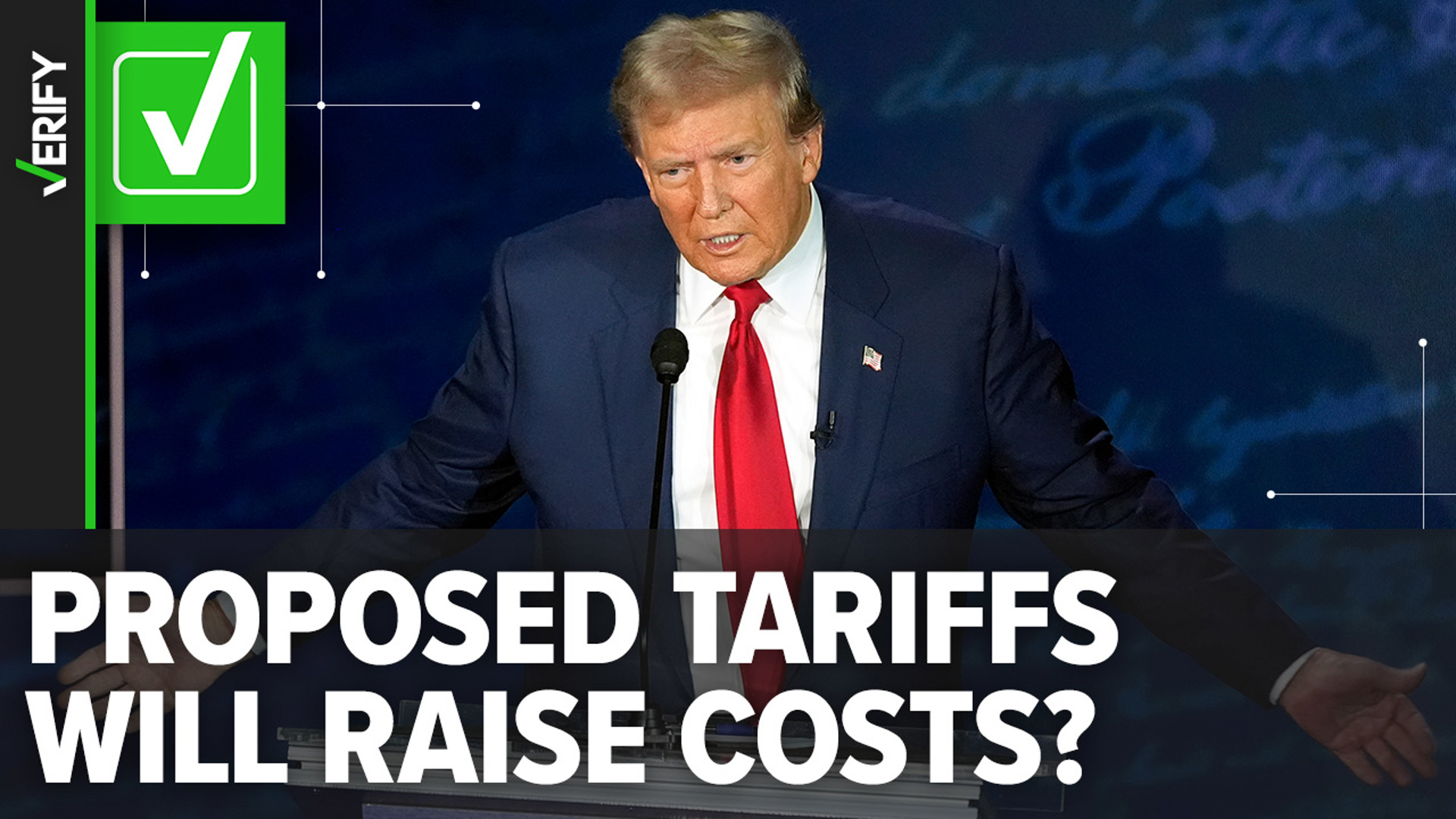Canada And Mexico: Diversifying Trade To Mitigate US Tariff Impact

Table of Contents
Exploring Alternative Trade Partners for Canada and Mexico
The over-reliance on the US market presents a significant risk. Diversifying trade requires actively seeking new partners and markets. Several promising avenues exist for both Canada and Mexico.
Latin American Markets
Expanding trade within the Latin American bloc offers substantial opportunities for Canada-Mexico trade.
- Increased trade with Brazil, Chile, and Colombia: Reducing dependence on the US market is key. These countries offer diverse markets for Canadian resources and Mexican manufactured goods.
- Negotiating new bilateral trade agreements: Lowering tariffs and simplifying customs procedures are crucial steps to facilitate increased trade. This requires proactive diplomacy and strategic negotiations.
- Exploring opportunities in emerging sectors: Renewable energy, technology, and sustainable agriculture represent high-growth sectors with significant potential for collaboration and export. This allows for diversification beyond traditional industries.
Asian Markets
The dynamic Asian economies present significant potential for trade diversification strategies.
- Strengthening ties with Japan, South Korea, and ASEAN members: These markets offer a vast consumer base and opportunities for export in various sectors. Strategic partnerships and investment are key.
- Focusing on export-oriented industries: Canada and Mexico possess comparative advantages in sectors such as automotive parts, aerospace, and agri-food. Targeting these industries in Asian markets can yield significant results.
- Utilizing existing free trade agreements: Leveraging existing agreements can streamline the process of entering these markets and reducing trade barriers. This minimizes the complexities involved in international trade.
European Union Markets
The EU presents a large and sophisticated market for diverse goods and services. Diversifying trade with the EU requires a targeted approach.
- Leveraging existing trade agreements (e.g., CETA for Canada): These agreements offer preferential access to the EU market, reducing tariffs and simplifying regulations.
- Targeting niche markets and high-value products: Differentiating from US competitors through specialized goods and services is crucial for success. This requires understanding the unique needs of the EU market.
- Promoting closer collaboration on R&D: Joint research and development initiatives can foster innovation and create new opportunities for trade and economic growth. This strengthens long-term relationships and fosters mutual benefit.
Strengthening Bilateral Trade Relations Between Canada and Mexico
Deepening the Canada-Mexico trade relationship is critical for mitigating the impact of US policies.
Enhanced Cooperation
Strengthening bilateral ties is essential for a resilient trading future.
- Developing new joint ventures and supply chains: Reducing reliance on US intermediaries by creating integrated North American supply chains that bypass US involvement.
- Investing in infrastructure projects: Improving cross-border transportation and logistics will significantly facilitate trade flows. This includes streamlining border crossings and improving transportation networks.
- Harmonizing regulations and standards: Simplifying trade processes by reducing bureaucratic hurdles and promoting regulatory compatibility between the two countries.
Focus on Regional Value Chains
Creating regional value chains less dependent on the US enhances economic resilience.
- Collaborating on strategic industries and technologies: Joint efforts in sectors like advanced manufacturing, clean energy, and digital technologies can create mutually beneficial opportunities.
- Promoting investment in manufacturing and processing: Encouraging domestic production and processing within Canada and Mexico will reduce vulnerability to external shocks.
- Developing regional supply chains for key industries: Establishing secure and reliable regional supply chains for vital sectors will ensure a consistent flow of goods and services.
Implementing Diversification Strategies
Effective implementation requires active government support and strong private sector engagement.
Government Support & Incentives
Governments play a vital role in fostering trade diversification.
- Providing financial incentives for businesses: Offering grants, tax breaks, and subsidized loans to encourage exploration of new markets.
- Investing in trade promotion and market research: Providing businesses with the information and support needed to navigate international markets effectively.
- Offering export financing and insurance programs: Reducing the financial risks associated with exporting to new markets.
Private Sector Engagement
Active participation from the private sector is paramount.
- Encouraging businesses to seek new export opportunities: Government programs should incentivize and facilitate this process.
- Promoting collaboration between businesses: Leveraging synergies and sharing resources to enhance competitiveness in international markets.
- Supporting industry associations in their efforts: Providing resources and support to industry groups engaged in trade diversification initiatives.
Conclusion
Diversifying trade is no longer a strategic advantage, but a necessity for both Canada and Mexico to mitigate the potential negative impact of US tariff policies and ensure long-term economic prosperity. By actively pursuing alternative trade partners, strengthening bilateral relations, and implementing targeted diversification strategies, Canada and Mexico can build a more resilient and robust trading landscape. This proactive approach to diversifying trade will lead to greater economic security and reduce reliance on any single market. Start exploring new opportunities for trade diversification today!

Featured Posts
-
 Bbc Radio 1 Big Weekend A Ticket Buyers Guide
May 25, 2025
Bbc Radio 1 Big Weekend A Ticket Buyers Guide
May 25, 2025 -
 El Legado De Florentino Perez En El Real Madrid Analisis De Su Presidencia
May 25, 2025
El Legado De Florentino Perez En El Real Madrid Analisis De Su Presidencia
May 25, 2025 -
 Porsche 956 Nin Havada Asili Durumunun Aciklamasi
May 25, 2025
Porsche 956 Nin Havada Asili Durumunun Aciklamasi
May 25, 2025 -
 Najvaecsie Nemecke Firmy Prepustaju Tisice Pracovnych Miest V Ohrozeni
May 25, 2025
Najvaecsie Nemecke Firmy Prepustaju Tisice Pracovnych Miest V Ohrozeni
May 25, 2025 -
 Ftc Launches Investigation Into Open Ai And Chat Gpt Key Questions Answered
May 25, 2025
Ftc Launches Investigation Into Open Ai And Chat Gpt Key Questions Answered
May 25, 2025
Latest Posts
-
 I Naomi Kampel Se Ilikia 54 Eton Diakopes Stis Maldives Me Tin Oikogeneia Tis
May 25, 2025
I Naomi Kampel Se Ilikia 54 Eton Diakopes Stis Maldives Me Tin Oikogeneia Tis
May 25, 2025 -
 Naomi Campbell And Anna Wintours Feud Is The Supermodel Banned From The 2025 Met Gala
May 25, 2025
Naomi Campbell And Anna Wintours Feud Is The Supermodel Banned From The 2025 Met Gala
May 25, 2025 -
 Naomi Kempbell Kak Ona Vyglyadit V 55 Let Foto
May 25, 2025
Naomi Kempbell Kak Ona Vyglyadit V 55 Let Foto
May 25, 2025 -
 Naomi Kampel Stis Maldives Apsogi Sta 54 Tis Me Mpikini
May 25, 2025
Naomi Kampel Stis Maldives Apsogi Sta 54 Tis Me Mpikini
May 25, 2025 -
 55 Letie Naomi Kempbell Eksklyuzivnye Fotografii
May 25, 2025
55 Letie Naomi Kempbell Eksklyuzivnye Fotografii
May 25, 2025
